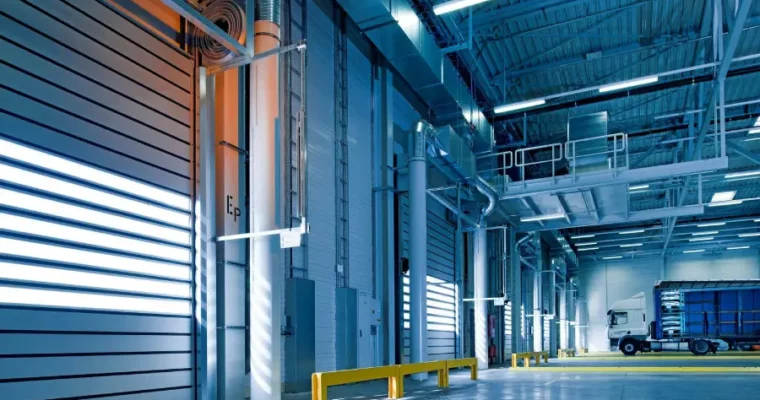For midsize businesses—particularly those operating on thin profit margins—warehouse costs represent a significant operational challenge. Expenses tied to warehousing, including rent, utilities, labour, insurance, taxes, and equipment upkeep, can easily surpass €1 million annually. Fortunately, warehouse managers, supply chain leads, and business owners have practical options to reduce these costs while maintaining or even improving service and efficiency.
What are Warehouse Costs?
Warehouse costs encompass all the expenditures associated with operating a storage facility. These include:
- Storage-related costs like lease or rent, insurance, utilities, and property taxes.
- Handling expenses such as labour and equipment used for receiving, storing, and shipping goods.
- Inventory management costs related to software, tracking systems, and labour for stock control.
- Fulfilment expenses, including picking, packing and shipping orders.
- Other operating costs include maintenance, repairs, and administrative overhead.
Factors like warehouse location, facility size, inventory turnover, and the overall complexity of operations can significantly influence these costs. Understanding the full cost structure is key to maintaining profitability and improving supply chain performance.
Key insights
- Improving processes and leveraging the right technologies can substantially cut warehouse costs.
- Employee training and automation are crucial to reducing inefficiencies and errors.
- Continuous review of vendors and internal processes supports long-term cost management.
Understanding Direct and Indirect Warehouse Costs
Warehouse expenses are typically classified into two main categories:
- Direct costs are directly linked to inventory storage or handling, e.g., rent, wages, and packaging supplies.
- Indirect costs include expenses not tied to a specific item, like utilities, insurance, and facility maintenance.
Inefficiencies, such as poor layout, outdated systems, or underutilised space, can cause these costs to spiral, especially as e-commerce pressures warehouses to boost speed and accuracy while managing tight budgets.
10 Proven Ways to Lower Warehouse Costs
Small inefficiencies can add up quickly in warehouse environments. However, businesses can adopt targeted strategies to cut expenses and improve operations- often with minimal investment. Here are 10 best practices to help reduce warehousing costs without compromising performance.
1. Implement Cross-Docking
Use cross-docking to minimise inventory storage times. This method involves transferring incoming goods directly to outgoing shipments, cutting labour and space costs. It’s especially effective for fast-moving items or pre-sorted shipments.
2. Use Data to Drive Decisions
Analyse warehouse data to pinpoint inefficiencies, peak load times, and underused resources. The 80/20 rule (also known as the Pareto Principle) suggests that a small percentage of items drives the majority of activity. Slotting analysis can help place high-demand items in more accessible locations, speeding up order fulfilment.
3. Maximise Vertical Space
Add mezzanine, tall shelving, or vertical lift modules to utilise building height. This avoids the need to expand horizontally and can significantly boost storage capacity, sometimes by up to 50%, without increasing the footprint.
4. Cross-Train Your Workforce
Training employees for multiple tasks increases flexibility and helps fill gaps due to turnover or absenteeism. Cross-trained workers are more adaptable, which improves productivity and employee morale.
5. Lower Utility Expenses
Switch to LED lighting, install motion sensors, and use smart HVAC systems to reduce electricity and heating costs. Energy-efficient upgrades can lower energy usage by up to 30%, according to industry studies.
6. Fine-Tune Inventory Management
Utilise techniques such as Just-In-Time (JIT), ABC analysis, and cycle counting to manage inventory lean and be responsive to demand. These methods help reduce storage needs, labour costs, and the risk of obsolescence or stockouts.
7. Streamline Picking and Packing
Adopt batch, zone, or wave picking strategies to reduce travel time. Technologies such as pick-to-light systems can further enhance operational efficiency. For packing, standardising materials and processes minimises errors and lowers packing costs.
8. Maintain Equipment Regularly
Regular preventive maintenance and training on proper equipment use extend asset life, reduce repair costs, and avoid downtime. Computerised maintenance systems can automate and optimise this process.
9. Optimise Transportation & Reassess Vendor Agreements
Consolidate shipments to improve trailer utilisation and reduce fuel costs. Load optimisation software ensures smarter packing and routing, lowering both costs and environmental impact. Select suppliers based on overall value, reliability, lead times, and service, rather than just price.
10. Upgrade Your WMS
A modern warehouse management system (WMS) improves inventory accuracy- often to over 99% -by automating data tracking and reducing manual errors. Cloud-based WMS platforms also offer scalability with lower initial investment compared to traditional systems. Get in touch with us to explore your options.
By combining multiple strategies, from smarter use of space to advanced technology, midsize businesses can significantly lower warehouse costs and increase efficiency across the board.



